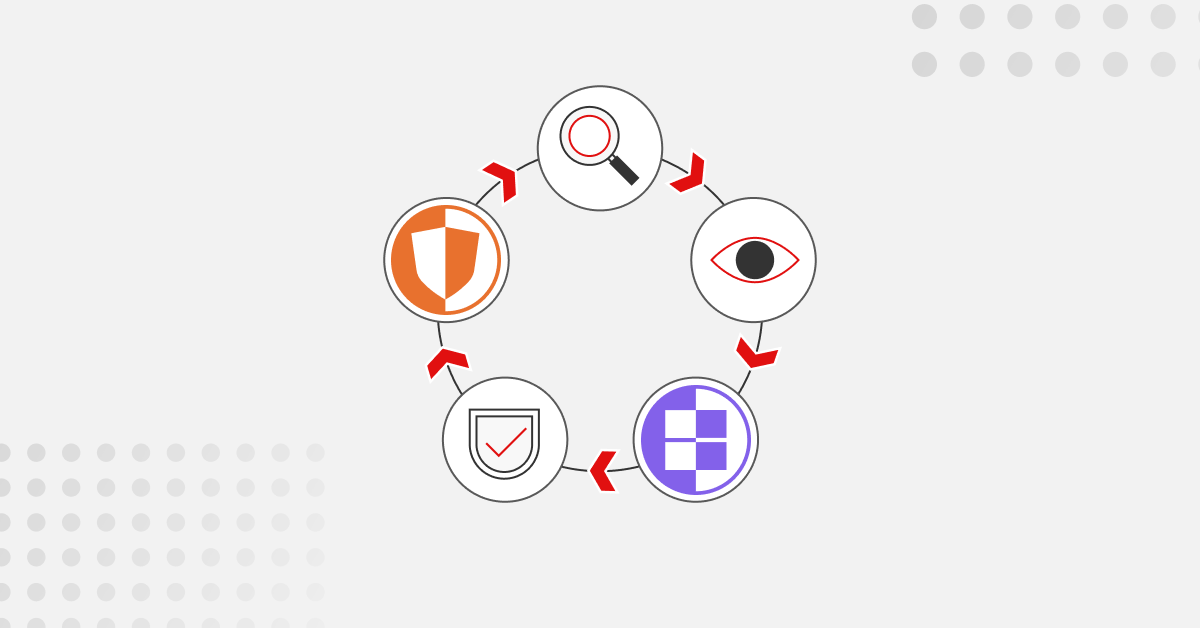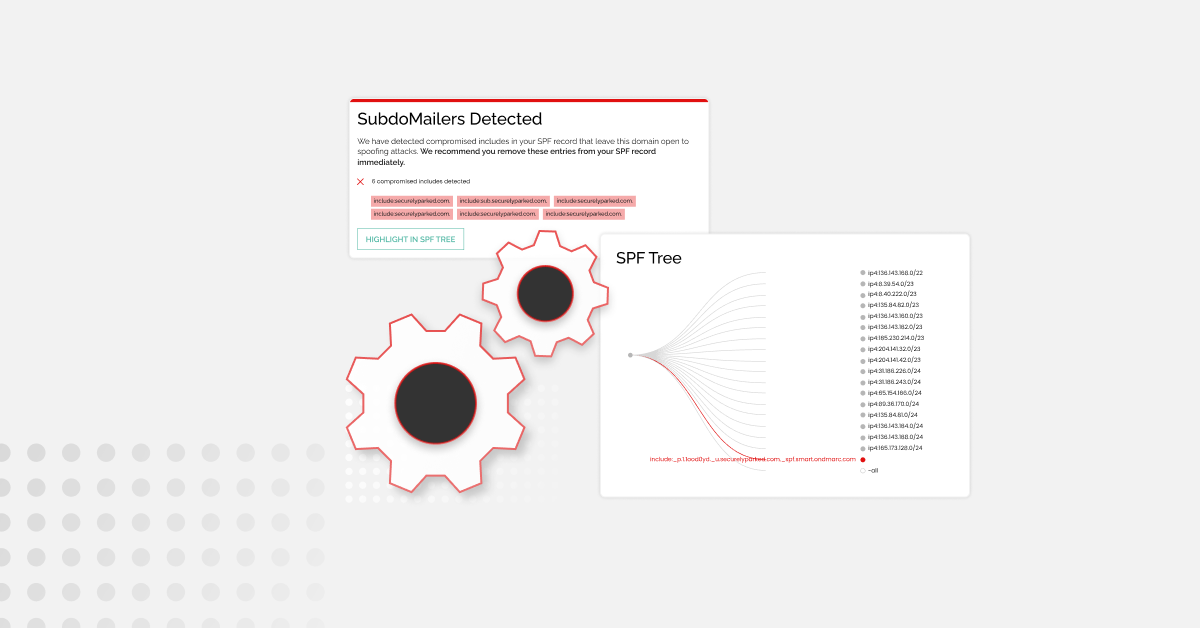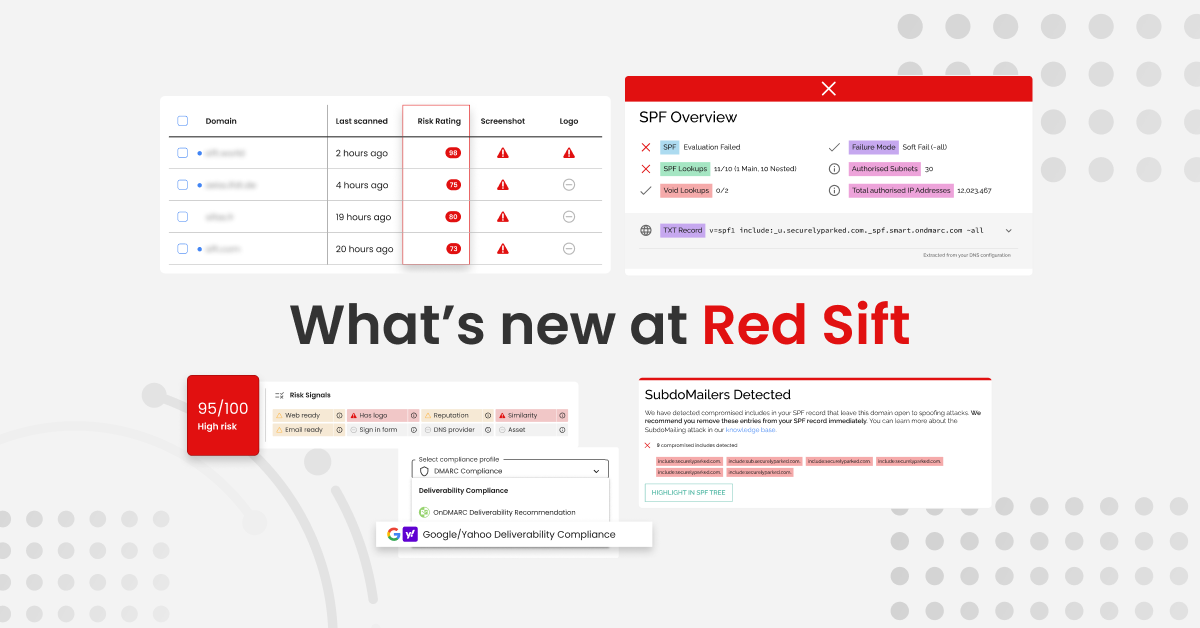Confused if your organization is ready for Google and Yahoo’s new requirements for bulk senders?
I know the feeling.
When the announcement came out in October, I was trying to figure out what they *actually* meant for people sending more than 5,000 emails a day.
Luckily the team at Red Sift has helped prepare this handy dandy matrix so you can to check that you won’t see messages being rejected or delivered to recipients’ spam folders come February 1, 2024.
What are the domain authentication requirements for Google and Yahoo’s new bulk sending guidelines?
To keep this matrix as simple as we can, we are limiting what we are looking at. Here we are only looking at the domain authentication requirements for Google and Yahoo’s bulk-sending requirements.
If you’re looking to understand all of the requirements (not just those specific to domain authentication) check out our guide.
Here is an illustrative – not exhaustive – list of common scenarios that may lead to bulk senders failing the new Google and Yahoo requirements.
| Header components | DMARC Policy | SPF | SPF Alignment | DKIM | DKIM Alignment | FCrDNS | Compliance | |
| DMARC Configuration | Message 1FROM: @example.comMAILFROM/RP: @example.comDKIM: d=exampleDMARC: p=rejectrDNS = 1.23.45.6 -> mta.example.comA record: mta.example.com -> 1.23.45.6 | 🟢 | 🟢 | 🟢 | 🟢 | 🟢 | 🟢 | 🌟This is the best practice for bulk senders |
| Message 2FROM: @example.comMAILFROM/RP: @example.comDKIM: d=exampleDMARC: p=nonerDNS = 1.23.45.6 -> mta.example.comA record: mta.example.com -> 1.23.45.6 | 🟢 | 🟢 | 🟢 | 🟢 | 🟢 | 🟢 | ✅Senders are only required to have a DMARC record, not DMARC enforcement | |
| Message 3FROM: @example.comMAILFROM/RP: @example.comDKIM: d=exampleDMARC: no recordrDNS = 1.23.45.6 -> mta.example.comA record: mta.example.com -> 1.23.45.6 | 🔴 | 🟢 | 🟢 | 🟢 | 🟢 | 🟢 | ❌A DMARC record is required. | |
| SPF & DKIM | Message 4FROM: @example.comMAILFROM/RP: @example.comDMARC: p=rejectrDNS = 1.23.45.6 -> mta.example.comA record: mta.example.com -> 1.23.45.6 | 🟢 | 🟢 | 🟢 | 🔴 | 🔴 | 🟢 | ❌Requires SPF & DKIM |
| Message 5FROM: @example.comMAILFROM/RP: @somethingelse.comDKIM: d=exampleDMARC: p=rejectrDNS = 1.23.45.6 -> mta.example.comA record: mta.example.com -> 1.23.45.6 | 🟢 | 🔴Sending IP not present in SPF record | 🔴 | 🟢 | 🟢 | 🟢 | ❌Requires SPF & DKIM | |
| Message 6FROM: @example.comMAILFROM/RP: @somethingelse.comDMARC: no recordDKIM: d=somethingelserDNS = 1.23.45.6 -> mta.example.comA record: mta.example.com -> 1.23.45.6 | 🔴 | 🟢 | 🔴 | 🟢 | 🔴 | 🟢 | ❌Requires SPF or DKIM alignment. By having neither this message is also not able to have DMARC. | |
| FcrDNS | Message 7FROM: @example.comMAILFROM/RP: @example.comDKIM: d=exampleDMARC: p=rejectrDNS = no recordA record: mta.example.com -> 1.23.45.6 | 🟢 | 🟢 | 🟢 | 🟢 | 🟢 | 🔴 | ❌The sending IP address does not resolve to a valid hostname. |
| Message 8FROM: @example.comMAILFROM/RP: @example.comDKIM: d=exampleDMARC: p=rejectrDNS = 1.23.45.6 -> mta.example.comA record: no record | 🟢 | 🟢 | 🟢 | 🟢 | 🟢 | 🔴 | ❌A record does not match the sending IP address. |
Other bulk sending gotchas
Mulitple sending services
Ok, so your email-sending domain is configured correctly. You should be golden, right?
Well…for big organizations it’s not always that simple.
If you are using more than one sending service (like Hubspot, Outreach, Marketo, etc.) you need to make sure that each one meets these new requirements or you may see deliverability issues.
Easy unsubscribe
Another tenant of Google and Yahoo’s bulk sending requirements is that it is easy for people to stop receiving your email.
They require one-click unsubscribe to be included on all commercial messages. But, Google also states that senders that already include an unsubscribe link in their messages have until June 1, 2024 to implement one-click unsubscribe in all commercial messages.
Low reported spam rates
The third tenant of the new requirements for bulk senders is that your organization keeps spam rates reported in Postmaster Tools below 0.3%. If you’re a Yahoo mail user, you can sign up for the Complaint Feedback Loop (CFL) program to check spam rates.
The good news: Red Sift makes it easy to validate that you’re ready
If you want an easy way to make sure your email-sending domains are ready come February 1, 2024, Red Sift makes it easy.
Use our Investigate tool to make sure that your email passes upcoming Google and Yahoo requirements. It will take you less than 60 seconds per email-sending service to verify, I promise.
| See if your email-sending domain meets the Google and Yahoo requirements in under 60 seconds Check your readiness now |






